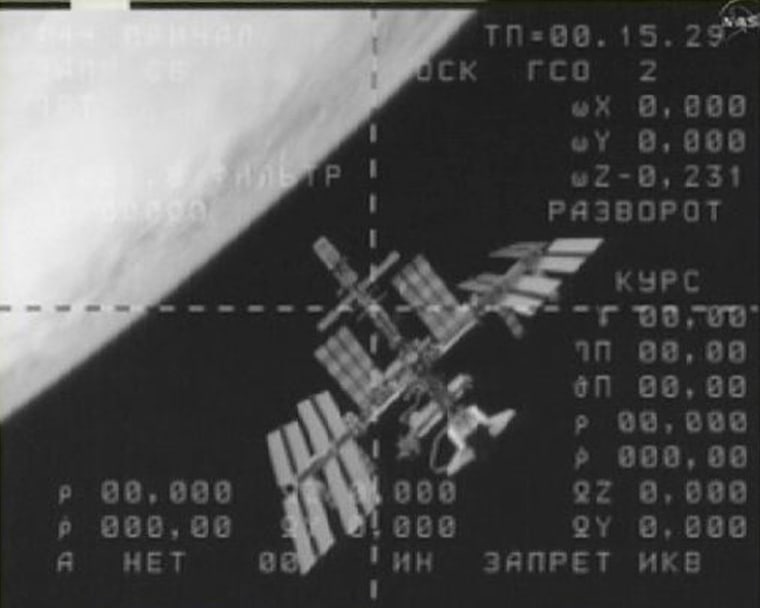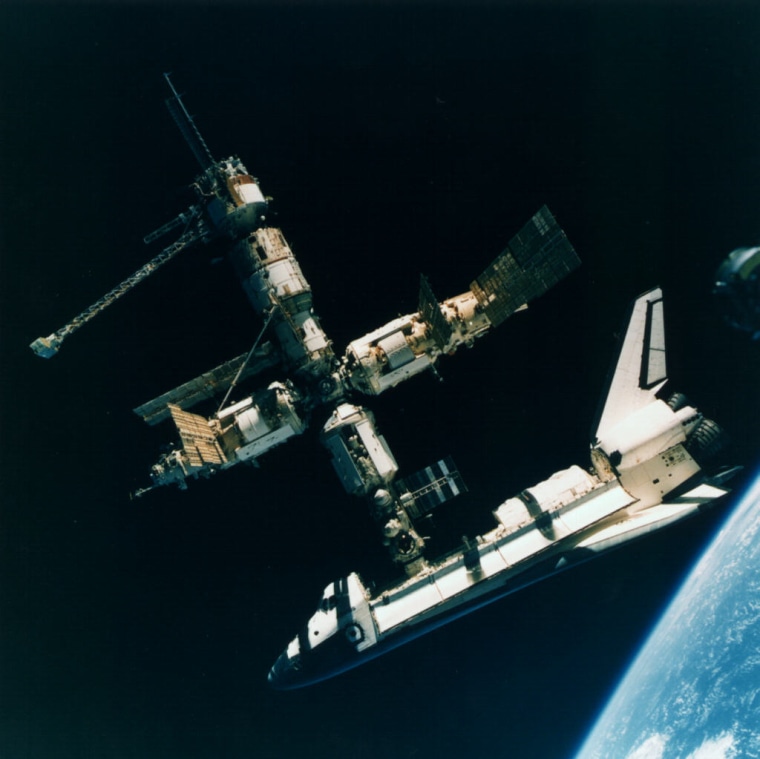
In these days of instant gratification through digital imagery, it may seem strange that this week's unprecedented pictures of the International Space Station and the shuttle Endeavour linked together in orbit are still being processed. But that's essentially what's going on.
The pictures are just now on their way to Moscow, contained on a batch of data-storage cards that are similar to the chips inside your digital camera. That's the word from NBC News space analyst James Oberg, who said he discussed the status of the pictures today with Rob Navias, a NASA spokesman at Johnson Space Center in Houston.
Still pictures and video clips of the photogenic linkup were captured on Monday from a Soyuz vehicle that was on its way back to Earth from the space station. Black-and-white engineering video from the Soyuz provided a low-quality preview of the imagery, but space geeks around the world have been salivating to see the high-definition, full-color versions.
Today, Navias said the data cards were left inside the Soyuz after it landed, and are due to be airlifted to Moscow on Thursday.
The contents of the Soyuz craft, including the precious cards, "will be processed through normal disposition procedures" at the Energia rocket company's spacecraft fabrication facility on the northern outskirts of Moscow, Navias told Oberg. NASA expects to get access to the pictures in about a week.
"This was always the plan," Navias said. But that doesn't square with the reports that went out from Mission Control before the photo op. One report, from NASASpaceflight.com, suggested that the images would be copied from the cards almost immediately after the Soyuz landed, and then would be either transmitted electronically to the U.S. or flown back to Houston.
In an email, Oberg said he could see how the cards might be left in the Soyuz, even if the returning astronauts intended to carry them out after landing. "We do it with vacation pictures from Earth all the time," he joked.
It could be worse. Just imagine how much a fuss there would have been if the cards were lost. Or imagine what would have gone through in the old days.

"In the past, spectacular space station photographs have taken much, much longer to be published because cameras weren't digital," Oberg wrote. "A shot of the shuttle docked to Mir in 1995, taken from a Soyuz that backed away just prior to the shuttle undocking to get the 'glamour shots,' took months to get back to Earth. A shot of three docked Russian vehicles at Mir, taken from an approaching Soyuz, also took months to get back to Earth and years to be released (since nobody in the West knew it had been taken)."
When you put it that way, waiting a week to see the latest beauty shots from orbit doesn't sound so bad. "They are worth waiting for," Oberg said.
You can connect with the Cosmic Log community by "liking" the log's Facebook page or following @b0yle on Twitter. Also, give a look to "The Case for Pluto," my book about the controversial dwarf planet and the search for new worlds.
